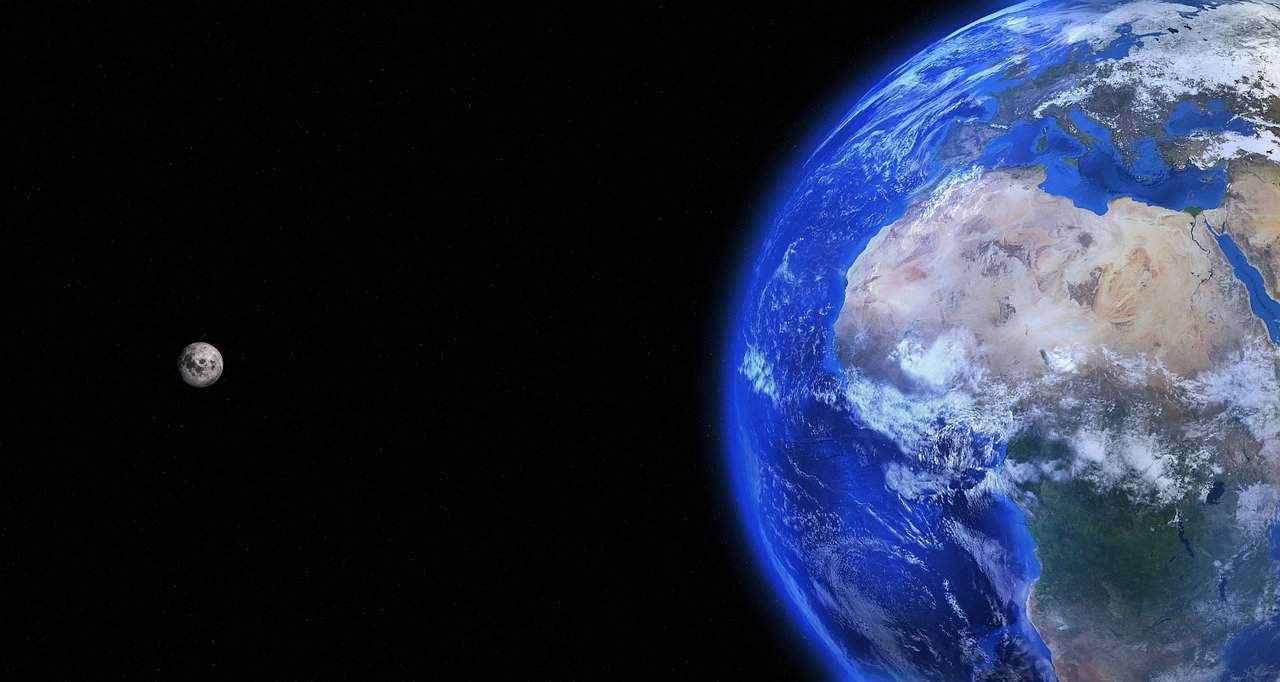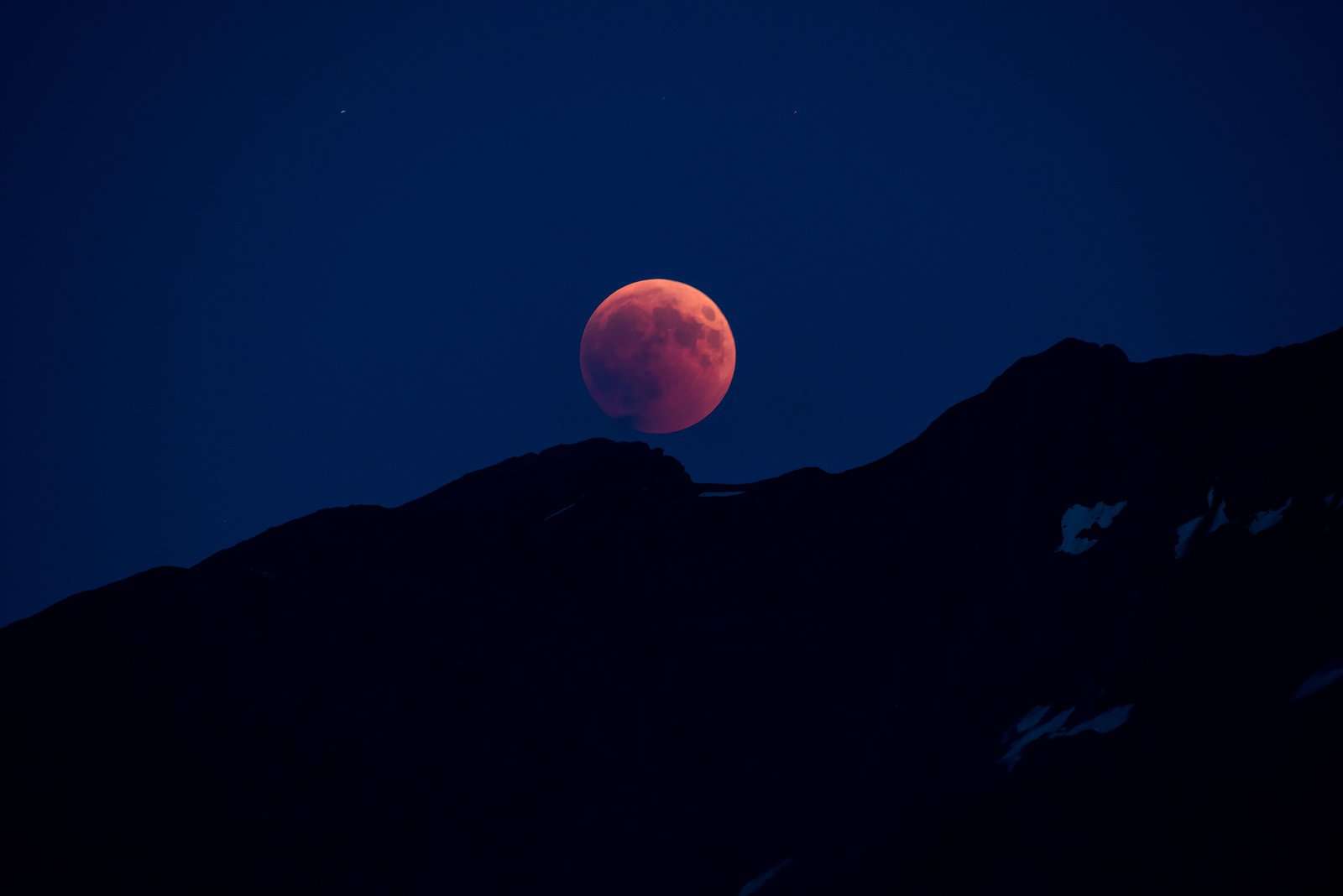
What Does the Moon Do? Discover 16 Fascinating Facts about the Moon
The Moon is the only natural satellite that orbits our planet, Earth. A natural satellite is a space body that orbits a planet. The average distance between the Moon and Earth is about 238,900 miles (384,400 kilometres). This distance is short in comparison to the distance between other planets and Earth. What most people don’t expect is that the Moon orbits Earth every 27.3 days, isn’t that strange? Are you interested in learning more about this beautiful object that lights up your sky at night? Then, let’s explore it together!
Surface and Structure
The Moon is a rocky and dusty place. It is made mostly of rock. The Moon’s surface is covered with dead volcanoes, lava flows, and many craters. The lava erupted from volcanoes billions of years ago. The craters form when meteorites crash into the Moon. The meteorites crashing into the Moon have also caused the surface to be covered with rocks and dust. Meteorites and rocks from outer space fall and crash right into the Moon because it has no atmosphere to protect it.
Size
Our Moon is the fifth largest of all the moons in the Solar System. It is about a quarter the size of the Earth. Its diameter is about 2,200 miles (3,500 kilometres). We see it so small because it is far away from us.

Temperature
The Moon is not protected from heat or cold because it does not have an atmosphere. So, temperatures on the Moon vary from super hot to super cold. During the daytime, surface temperatures can reach 225 °F (107 °C). However, when the Sun goes down at night, temperatures drop to about −243 °F (−153 °C).
Orbit and Rotation
The Moon has two types of motion: orbit around Earth, and spin, or rotation, around its centre. The Moon completes an orbit around Earth in about 27 days, and it completes a rotation, or spin, about its centre in about 27 days, too. For this reason, the same side of the Moon is always facing Earth.
Phases of the Moon
You must have noticed that the Moon appears in a different shape each night, but did you know why? Here is the answer!
The Moon does not give off light itself. Instead, it only reflects light from the Sun. So, as the Moon orbits Earth, the Sun lights up different parts of its surface. This makes the Moon seem as if it is changing shape each night. Actually, it is just our view of the Moon that is changing, not the Moon itself.
The changes in the shape of the Moon are called “phases”. The moon goes through 8 major phases during 29.5 days. This is equal to one month. The Moon takes a month to go through its eight different phases because the Earth is moving around the sun at the same time.
The eight phases of the Moon are:
1. New Moon
During this phase, the Moon cannot be seen because it faces Earth from its unlit half. This phase occurs when the Moon is directly between the Earth and the Sun.
2. Waxing Crescent Moon
During this phase, the Moon looks like a crescent. The size of the crescent increases from one day to the next.
3. The First Quarter Moon (Half Moon)
During this phase, half of the lit portion of the Moon is visible. This phase comes a week after the New Moon.
4. Waxing Gibbous Moon
During this phase, we can see more than half of the lit portion of the Moon. The size of the Moon increases from one day to the next.
5. Full Moon
During this phase, we can see the entire lit portion of the Moon. The full Moon phase occurs when the Moon is on the opposite side of the Earth from the Sun.
6. Waning Gibbous Moon
During this phase, we can see more than half of the lit portion of the Moon. The size of the Moon decreases from one day to the next.
7. The Last Quarter Moon (Half Moon)
During this phase, half of the lit portion of the Moon is visible.
8. Waning Crescent Moon
During this phase, the Moon looks like a crescent. The size of the crescent decreases from one day to the next.

Moonrise and Moonset
The moon rises and sets at specific times, according to what phase it is in:
- The New Moon rises and sets at nearly the same time as the sun.
- The First Quarter Moon rises at mid-morning and sets at midnight. So, it is at its height around dusk, not in the middle of the night.
- The Full Moon rises at sunset and sets at sunrise, and it is the only moon that will be overhead in the middle of the night.
- The Last Quarter Moon rises at midnight and sets at mid-morning.
Eclipse
Sometimes the positions of the Moon, the Sun, and Earth cause an event called an eclipse. An eclipse can happen to either the Sun or the Moon. The eclipse of the Sun is called a solar eclipse, and it occurs when the Moon blocks the view of the Sun for a short time. The eclipse of the Moon is called a lunar eclipse, and it occurs when the Earth prevents the Sun from shining on the Moon.
During a lunar eclipse, Earth comes between the Sun and the Moon and blocks the sunlight from falling on the Moon. Earth’s shadow covers all or part of the surface of the Moon. There are two kinds of lunar eclipses:
1. A Total Lunar Eclipse
It occurs when the Moon and Sun are on opposite sides of Earth.
2. A Partial Lunar Eclipse
It occurs when only part of Earth’s shadow covers the Moon.
Blood Moon
During a full lunar eclipse, the Moon can appear red. This can happen when a little bit of light from Earth’s sunrises and sunsets falls on the surface of the Moon. When the light waves stretch out, they look red, and when the red light falls on the Moon’s surface, it appears red. We call this a “Blood Moon”.

Exploration
People have observed the Moon since ancient times because it is the brightest object in the night sky. After the invention of the telescope, people became able to study the Moon more closely. Before people stood on the Moon, the United States and the Soviet Union sent robots to the Moon. Some robots orbited the Moon and some landed on its surface. Since 1959, many spacecraft have been sent to the Moon. The first unmanned spacecraft to land on the Moon successfully was Luna 9, which was sent by the Soviet Union in 1966.
Humans landed on the Moon on July 21, 1969. The U.S. Apollo 11 craft carried Astronauts Neil Armstrong and Buzz Aldrin to the surface of the moon. Then, Armstrong climbed down the ladder of the spacecraft and was the first human to touch the Moon.
Ten other people have walked on the Moon since then. The last person to touch the Moon was Eugene Cernan of Apollo 17, which was the last spaceship to visit the Moon.
What Does the Moon Do?
The Moon is close to Earth enough to affect it in many ways; for example:
- The gravity of the Moon pulls on Earth. It is too weak to affect the whole planet, but it makes the water in seas and oceans move, which creates the tides.
- The pull of the Moon causes the Earth’s rotation to slow down. As a result, the length of our day increases by 2.3 milliseconds per century. Scientists say that in around 200 million years, a day on our planet will be 25 hours long.
- The Moon picks up the energy that Earth loses. As a result, the distance between the Moon and Earth increases. The moon gets farther away by 1.5 inches (3.8 centimetres) every year.
- The Moon makes Earth a more livable planet by moderating its wobble on its axis, leading to a stable climate in which life could flourish.
17 Interesting Facts about the Moon
- The Moon is the second brightest object in our sky after the Sun, and the brightest object in the night sky.
- The Moon is the only place beyond Earth where humans have set foot.
- It is simply called “the Moon” because people did not know any other moons until Galileo Galilei discovered four moons orbiting planet Jupiter in 1610.
- The Moon is shaped like an egg.
- The Moon is bigger than Pluto.
- The Moon orbits the Earth as fast as a rifle bullet.
- It takes a spacecraft about 3 days to reach the Moon.
- We only see around 60% of the Moon’s surface from Earth.
- Just like the Sun, the Moon rises in the east and sets in the west.
- There is no air resistance on the Moon because there is no atmosphere surrounding it, so a feather will fall as fast as a hammer.
- The footprints of the astronauts of Apollo are still there on the Moon. This is because there is no wind or rain, so there is no erosion on the Moon.
- A solar eclipse can only happen at new moon.
- A lunar eclipse can only happen at full moon.
- During a “blood moon” lunar eclipse, an observer from there would see all Earth’s sunrises and sunsets at once.
- Most scientists believe that there is water on the Moon, but they are still researching.
- The only month that can occur without a full moon is February.
- The Moon does not produce its own light, and we see it only because it reflects light from the Sun. So, if the Sun was not there, we would not be able to see the Moon.


Leave a Reply